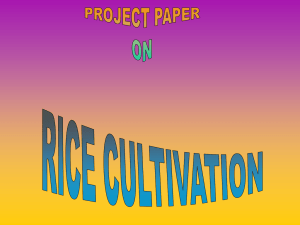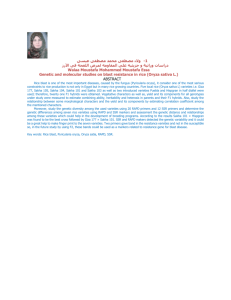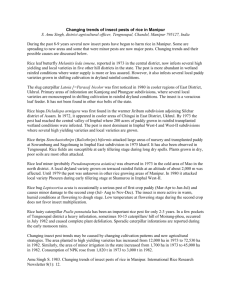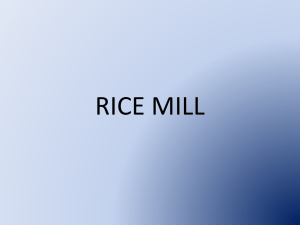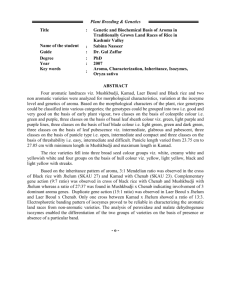Conservation and Land Use: Using Indigenous
advertisement
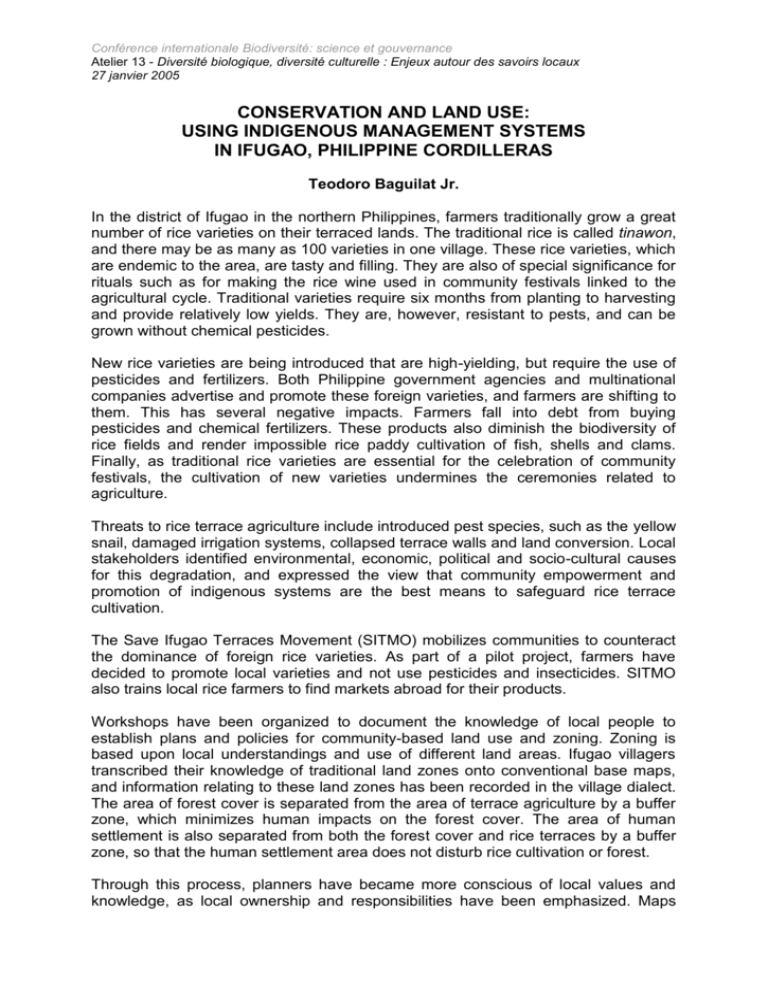
Conférence internationale Biodiversité: science et gouvernance Atelier 13 - Diversité biologique, diversité culturelle : Enjeux autour des savoirs locaux 27 janvier 2005 CONSERVATION AND LAND USE: USING INDIGENOUS MANAGEMENT SYSTEMS IN IFUGAO, PHILIPPINE CORDILLERAS Teodoro Baguilat Jr. In the district of Ifugao in the northern Philippines, farmers traditionally grow a great number of rice varieties on their terraced lands. The traditional rice is called tinawon, and there may be as many as 100 varieties in one village. These rice varieties, which are endemic to the area, are tasty and filling. They are also of special significance for rituals such as for making the rice wine used in community festivals linked to the agricultural cycle. Traditional varieties require six months from planting to harvesting and provide relatively low yields. They are, however, resistant to pests, and can be grown without chemical pesticides. New rice varieties are being introduced that are high-yielding, but require the use of pesticides and fertilizers. Both Philippine government agencies and multinational companies advertise and promote these foreign varieties, and farmers are shifting to them. This has several negative impacts. Farmers fall into debt from buying pesticides and chemical fertilizers. These products also diminish the biodiversity of rice fields and render impossible rice paddy cultivation of fish, shells and clams. Finally, as traditional rice varieties are essential for the celebration of community festivals, the cultivation of new varieties undermines the ceremonies related to agriculture. Threats to rice terrace agriculture include introduced pest species, such as the yellow snail, damaged irrigation systems, collapsed terrace walls and land conversion. Local stakeholders identified environmental, economic, political and socio-cultural causes for this degradation, and expressed the view that community empowerment and promotion of indigenous systems are the best means to safeguard rice terrace cultivation. The Save Ifugao Terraces Movement (SITMO) mobilizes communities to counteract the dominance of foreign rice varieties. As part of a pilot project, farmers have decided to promote local varieties and not use pesticides and insecticides. SITMO also trains local rice farmers to find markets abroad for their products. Workshops have been organized to document the knowledge of local people to establish plans and policies for community-based land use and zoning. Zoning is based upon local understandings and use of different land areas. Ifugao villagers transcribed their knowledge of traditional land zones onto conventional base maps, and information relating to these land zones has been recorded in the village dialect. The area of forest cover is separated from the area of terrace agriculture by a buffer zone, which minimizes human impacts on the forest cover. The area of human settlement is also separated from both the forest cover and rice terraces by a buffer zone, so that the human settlement area does not disturb rice cultivation or forest. Through this process, planners have became more conscious of local values and knowledge, as local ownership and responsibilities have been emphasized. Maps Conférence internationale Biodiversité: science et gouvernance Atelier 13 - Diversité biologique, diversité culturelle : Enjeux autour des savoirs locaux 27 janvier 2005 and other materials were presented to the village assembly so that everyone’s viewpoint could be discussed, considered and accommodated. Finally, with suggestions from the village assembly, land use plans and regulations were consolidated, and the village and municipal governments approved a zoning ordinance. The next step will be to incorporate indigenous concepts into national policies. The challenge will be to define and maintain the local values related to land use.
